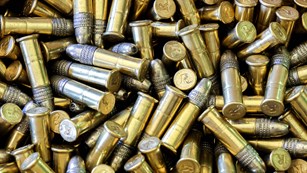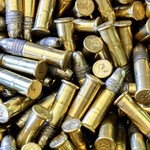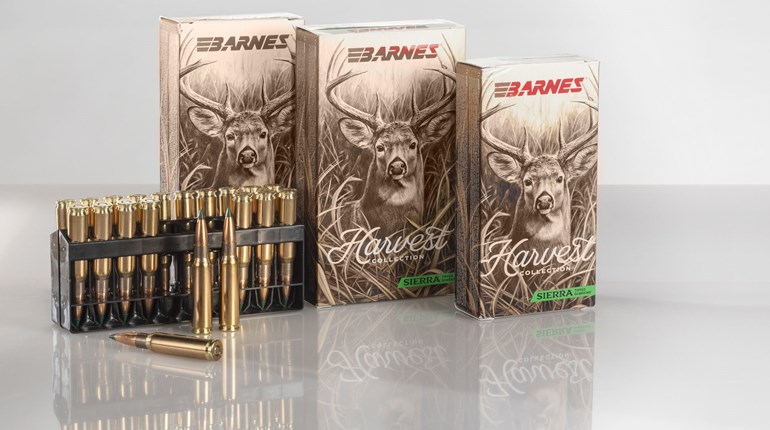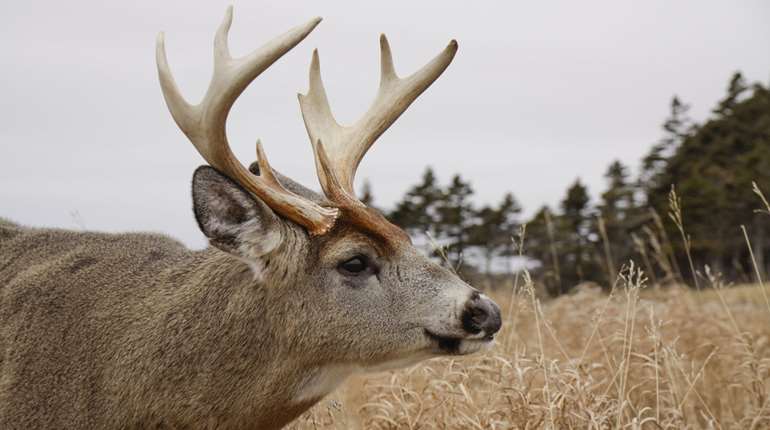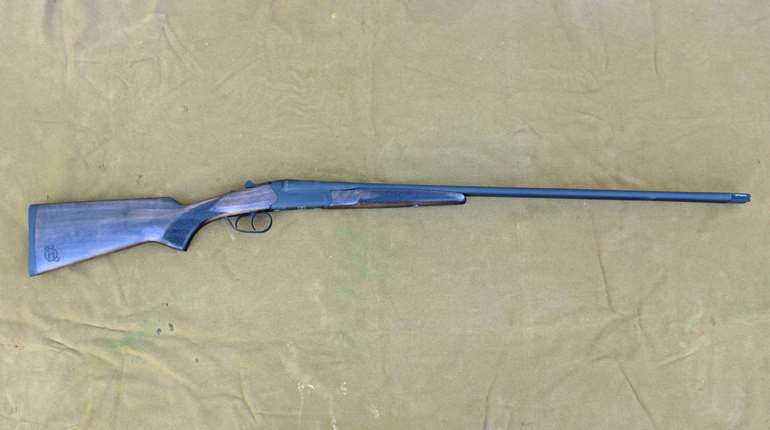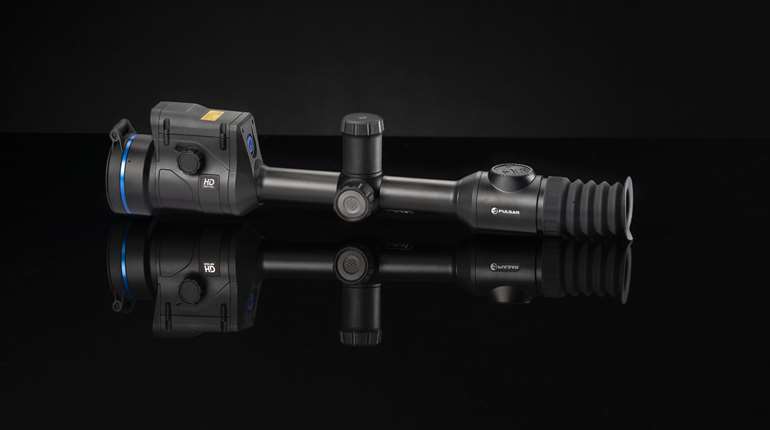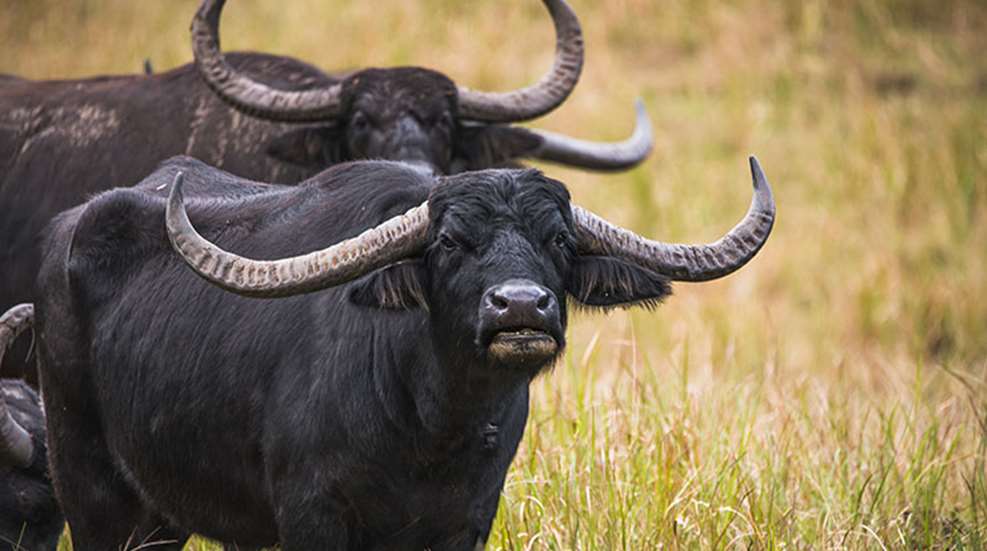
It’s trendy in some hunting circles to claim the buffalo in Australia are not dangerous. But, the evidence says otherwise. In late August 2017 I arrived at Camp Aredi (Buffalo Dreaming) in Arnhem Land along the Walker River on the north coast of Australia. A man I expected to see in camp was not there because he was still in the hospital recovering from an unprovoked buffalo attack that occurred in early July.
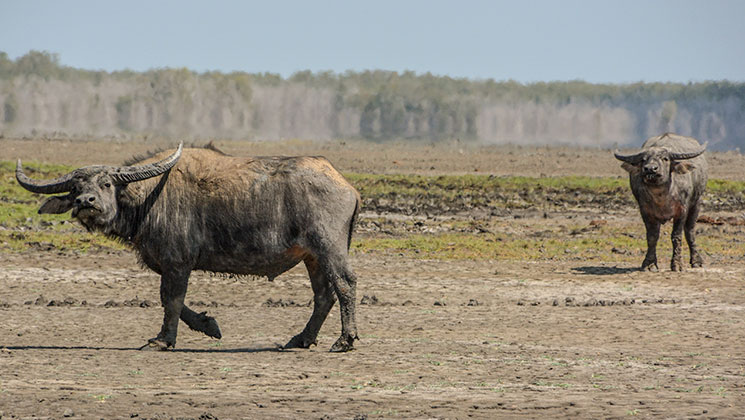
Glen Griffen was walking with two hunters when the bull attacked at close range. He took a moment to push one of the hunters to safety and then he shot at the buffalo. The bullet hit the bull’s horn, tumbled and had little effect. The bull hit Glen, causing massive damage. The momentum caused the bull to run past and as it turned to come back again one of the hunters shot it in the neck, ending the attack. Had the buffalo hit him again it’s doubtful Glen would have survived.
If that’s not enough, another local man was nearly killed by a wild ox he had wounded with an insufficient rifle cartridge around the same time. He too was saved by the quick and heroic actions of his hunting companion.
I started digging and found lots and lots of reports of buffalo attacks in Australia, which led me to a theory. I think that because the Cape buffalo in Africa has been hunted for much longer and by many more people it has developed a reputation for being surly. Far fewer hunters have experience with the Australian buffalo.
I have only hunted Australian buffalo once, but I have hunted Cape buffalo multiple times. If I had based my opinions on the first three Cape buffalo I shot, I would have said they were not dangerous and were easy to kill. Then I ran into No. 4, and that changed my opinion.
So what is the truth about Australian buffalo? I honestly don’t know. But, I gave those bulls plenty of respect. I know without a doubt that any bovine can be very dangerous and unpredictable. Just ask Glen Griffen.
■ ■ ■
I started looking for a buffalo hunt several years ago and again and again I was steered to Simon Kyle-Little. Simon pioneered hunting buffalo in the wild lands of northern Australia. His father was one of the first modern white men to explore Arnhem Land and to develop a relationship with the aboriginal people living there. He wrote a book about it called Whispering Wind. It’s available on Amazon and I highly recommend it for anybody interested in the history of this part of the world.
Simon was the first to approach the aboriginal people who own this land and to work out a partnership to allow him to hunt. That has clearly developed into a mutual respect and friendship that has endured the decades. When I met Henry Nunggumajbarr, the Junkai of his clan, he told me, “Thirty years ago I heard about this crazy white man who wanted to hunt buffalo, so I went looking for him and we met on the road.”
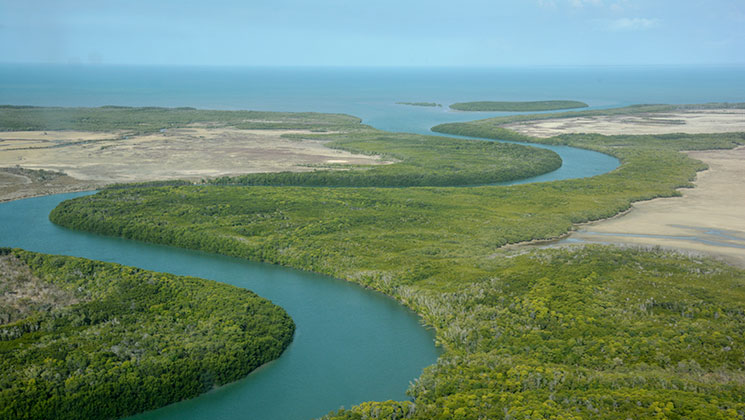
Simon picked it up there. “Henry wanted to go with me on a hunt to see how it was done,” he said. “I had some German hunters and one of them wounded a bull that ran into the coastal jungle. We had a blood trail so we followed. I was carrying a .338 Winchester back then. I was young and full of confidence, but I still felt pretty under-gunned. We could hear the bull coming, and Henry parted the bushes to see the bull looking right at him and coming fast. He ran to get out of the way and fell down when his feet tangled in some vines. When the bull came through the bushes I shot him in the head to stop the charge and he fell on Henry’s feet.”
Henry added, “I never forgot that. It told you this buffalo hunting was crazy and it would get us all killed.”
Today, the men are best friends.
I had the rare pleasure of meeting Henry and spending a day with him. He told me about much of Aboriginal culture and about their relationship with the buffalo. Even though the buffalo is an introduced species and is often the subject of eradication efforts by the government, the “blackfellows” (as Aboriginals call themselves) have embraced the buffalo and made it part of their culture. He told me of the “Buffalo Dreaming” and the story of how the white buffalo led the herd into their part of northern Australia for the benefit of his people.
“The buffalo came over the Blue Mountains through Mangurra to Marrklawa. They call him Bredalla,” Henry said. “Now the white buffalo is ceremony.” Ceremonies have been part of Aboriginal culture since it began 40,000 years ago; to have included the buffalo illustrates how they can adapt to change with their always-evolving culture.
Buffalo populations are isolated to the north-central part of Australia’s Northern Territory in the section called the “Top End.” Here the wild places are called the bush and not the outback, which is farther south. Here there is a tropical monsoon climate that produces wet and dry seasons. The buffalo thrive in the swamps and floodplains of the coastal areas.
"If you do not respect this land the spirits of the old men will whisper to the buffalo and tell them to punish you."—Henry Nunggumajbarr
The history of the buffalo in Australia is a bit convoluted, I suspect due to politics. According to the Internet, the Australian government states: “Water buffalo were imported to Australia in the 19th century to supply meat to remote northern settlements. The settlements and their buffalo were abandoned in 1949 and, despite harvesting for meat, hides and as hunters’ trophies, feral buffalo spread across the northern floodplains.”
I understood that to mean the buffalo were not wild until after 1949. If that’s true then why are there so many reports of hunting buffalo in the mid to late 1800s through World War II? They were brought into Australia as early as 1824; history says they were wild long before 1949.
The famous author and poet Andrew Barton “Banjo” Paterson went to live with the buffalo hunters and write about them back in 1898. By then buffalo hunting was already well established in northern Australia. Commercial buffalo hunting peaked around 1913 when the buffalo were obviously well entrenched in the bush and populations were strong.
“The buffalo does seem to consume a fairly large part of our collective imagination,” Matthew Stephen from Northern Territories Archives said in an article by ABC. He also said, “The Europeans didn’t last as long as the buffalo. The buffalo was a lot more adaptable than the first whitefellas were.” For that I am thankful, as hunting buffalo in Australia is one heck of an adventure and ranks up there with one of the best hunting trips of my career.
■ ■ ■
On other days we saw lots of buffalo—a hundred or more on a good day, and I lost count of the bulls we looked over. Yet on this day we were 50 miles from camp on the thin roads there and had seen only one buffalo. It seemed as if they went extinct overnight.
Our goal was a remote valley deep in the Njilipidji Clan Lands. Simon explained it is rare to find a cow there and that it’s a place for old bulls; it’s often where they go to live out what is left of their lives and to die in peace. The idea was not to expect to see lots and lots of buffalo, but that those we would see may be good bulls.
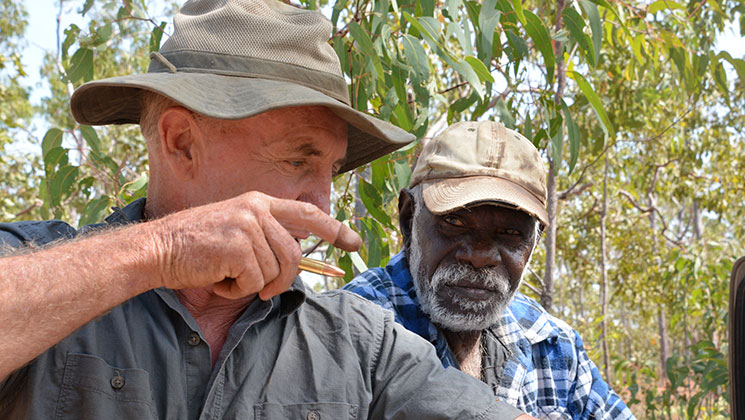
As we got closer we started to see a few more buffalo; clearly they were back on the move. We stalked in close to a few bulls, but walked away when we discovered they were not quite what we were looking for. Deep in the valley we spotted a lone bull. He was big and black, with wide, sweeping horns and he was all alone and feeding slowly. The land was relatively open due to a burn some time back, and getting close was going to be tough.
We used the sparse vegetation as cover to get within a couple of hundred yards before stalling. It was dry and noisy as well as open, conditions that are never good for the hunter. Still, this was a bull I was not willing to walk away from.
So, from there we used risky tactics. When the bull had his head behind a tree, we moved, trying to be quiet in the dry leaves. This is always a gamble. Just because we think his eyes are blocked from seeing us does not make it so. On a stalk like this the hunter will live every second with the understanding that the bull could see or hear something at any time and end the game early.
This was an old, tired bull deep into his retirement, and he was in no hurry. When his head left the cover of one of the small trees, it was often a century or longer before he drifted far enough to reach the next tree. Getting close was agonizing work. It took a lot of mental scolding to maintain discipline and not rush ahead and ruin this chance.
Time changes in these conditions. I can’t honestly tell you how long we stalked this bull. It seemed like most of September, but was probably little more than an hour. It’s that relativity thing that Albert was so fond of, I suppose. Even at that it was a very, very long hour.
I would have preferred to be even closer. Long shots are neither the purview of my rifle of choice nor are they ever a good idea on dangerous game. When what you are hunting can reduce you to a bloody puddle, it’s always a good idea to be absolutely certain about bullet placement. Distance invariably adds uncertainty.
After gaining another 75 yards the cover simply gave out. The gap was still longer than ideal, but it was “shoot from here” or not. There simply were no other options. I spread the shooting sticks, laid my rifle on them and waited. The bull was behind a few trees; not his eyes this time, but the part I wanted to send my bullet out to meet. So I waited some more.
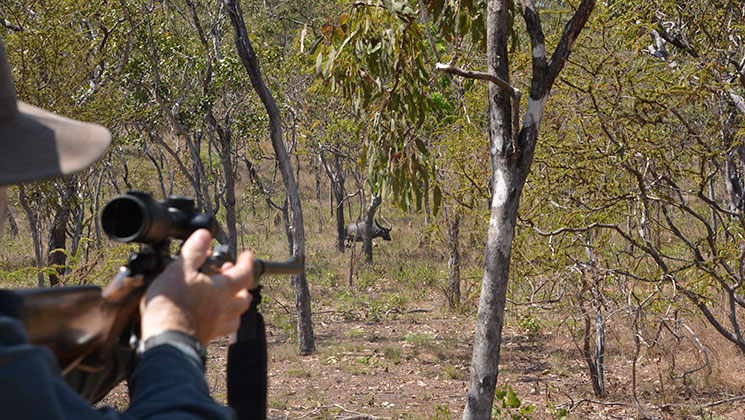
Our president might call this bull “low energy” as it seemed to be very content just standing there watching the world. Me? I was something different. I always am with my first time hunting a new species in a new place. I had waited for this moment; I had invested a lot of time, emotion and treasure. I have hunted enough to know that until you are loading the critter into the truck there is always a lot that can go wrong. Sure there were plenty of buffalo and there was always another chance, but I had decided that this was my bull and that no other mattered.
I was trying to be calm, to stay focused and to hold still. To an outsider it would have appeared like I was leaning into the rifle, watching through the scope, calmly waiting. Inside I was a little kid tired of shopping with his mom, all the while wiggling, squirming and needing to go to the bathroom. My joints started hurting and my eyes were watering. It was becoming progressively harder to hold focus through the scope and to keep the rifle still. I willed it not to be so, but the little kid was winning.
Finally the bull took a half-step. He was not where I had planned to shoot him, but his shoulder showed through a small gap in the trees. Another man might have waited, but I learned a long time ago it’s best to take the first presented shot, and this was it. I shifted the crosshairs to the black shoulder blade just as he took another small step and shoulder turned into ribs. Good enough: I pulled the trigger and the big rifle roared. I cranked the bolt and hit him again as he stumbled forward.
This old bull had come here to die, but not today. I was both shocked and awed at his tenacity to life. I hit him again and again with one of the most powerful rifle cartridges on the planet, yet he refused to give up and would not go down. I have always heard that these buffalo are tough and hard to settle; now I had my proof.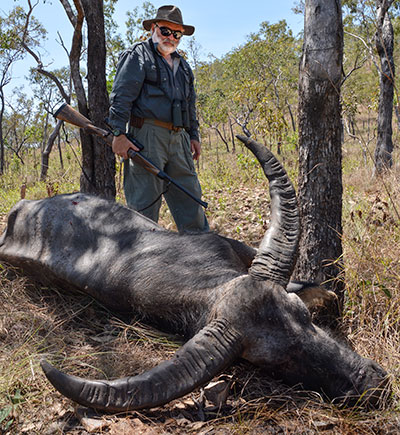
I know the first bullet was enough, but I am not one to admire my shot and wait. I have seen too many “dead” critters run away. If they are on their feet I keep shooting. Then it was over. The old bull, a veteran of many battles, finally lost one. He fell, took his final breath and laid still. My breath was ragged and rapid and it took a very long time for me to catch up with it.
The bull was 28 years old, well past the expected lifespan of any buffalo. His teeth were worn past the gum line and he was skin and bones as he slowly starved from an inability to properly chew his food.
He had been born in the 1980s and had many generations of offspring populating the swamps of Arnhem Land. His genes would help to grow many more wide-horned bulls for decades to come. His horns were a bit thin but spanned 42 inches, which is a trophy if you care to measure his worth that way.
For me, it was his age that made the trophy. This was a smart old bull that had managed to avoid man, crocodiles, dingoes, disease, famine and all the other elements that prevent the vast majority of buffalo from living as long as he did. He was perhaps months from dying and no doubt the stress of the coming hot season might have finally finished him off. I was humbled to have hunted this old survivor and I hoped he would agree this was a better ending.
When we pulled into camp late that night there was a big bull buffalo standing in the road as if waiting for us. I suspect the old men had whispered to him that one of his elders had passed and that his duty was to guard the elder buffalo’s spirit on its journey to the next world.
■ ■ ■
The Walker River lays deep below the camp, yet this area floods often in the wet season. The buildings are constructed to deal with that. The main camp is a basic building with metal siding and concrete floors. My cabin was high on pylons to elevate it above the water. I shared the cabin with a friendly gecko and with the crows that walked on the roof at first light to wake me up and that would steal from my gear I left on a table on the small porch.
Each night as I drifted to sleep the dingoes would sing to me a lullaby. I have listened to coyotes all over North America and have often heard wolves in the wilder places. The dingoes’ song was similar, but different somehow, sharper, more Australian.
The other wild cattle in this area are wild oxen. They are bigger and rarer than the buffalo and are more difficult to hunt. They prefer the thick brush and tend to stay well back from the roads, which meant plenty of walking.
After a few days of fighting green ants and cobwebs and experiencing plenty of scratches and scrapes, I was starting to get an idea of what the bush was like. Perhaps what I learned quickest is which tree leaves house green ants. Brushing through them results in an infestation of these nasty little jerks that I heard were in Australia because they were kicked out of hell for being too mean.
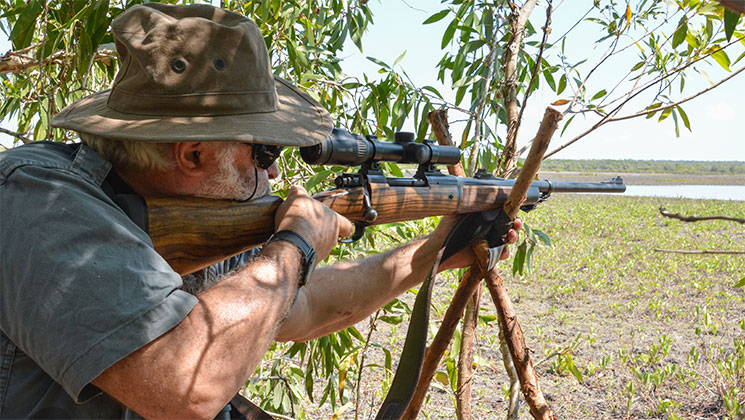
They look like any other ant, except they are a neon green color. That’s interesting at first, but after experiencing a few bites you realize the bright color works best to aid you in hunting down and smashing those trying to chew on your delicate hide. At least until you understand that if you don’t brush through those trees you won’t find any ants on you. Unless of course you decide to sit down because you are tired and your back hurts. I was never able to locate a place where I could sit for more than a few minutes without being discovered by these green demons. So, you keep walking, which is the best way to find a wild ox anyway.
Well after the novelty had worn off and the day had become hot and a steady stream of sweat was stinging my eyes, Simon spotted a good bull with a small herd of oxen. In order to get the wind right we had to walk for some distance paralleling a billabong (at least in the more modern use of the term “billabong”). Simon explained that a billabong is actually an oxbow waterhole isolated from a river by a changing riverbed, but today it’s come to mean any waterhole. In this case we were working along a small river that had dried up to nothing more than a series of pools of water. It was eroded deep into the land for much of its path, making crossing all but impossible. So, we walked.
Once we found a place and crossed over we reversed direction, paralleling the billabong, but this time with the wind in our faces for much of the trip.
We were working our way into where we had last seen the wild oxen. We knew we were close, but the brush was so thick we couldn’t see more than a few yards at times. Then, downwind of us the world erupted. Our scent had drifted into a bunch of buffalo, which I guess didn’t like the smell of the two whitefellows. They busted out of there like their tails were on fire and the oxen took the hint and went crashing off in the opposite direction.
Most hunters understand the crushing and devastating disappointment when you have spent all day for a chance, walked miles, endured hardships and then it’s torn away with haphazard randomness. We hadn’t done a thing wrong; the hunting gods were just feeling mean and decided to mess with us.
We had no option except to follow the oxen as they ran along the river. They too needed to find a place to cross. We walked in sullen silence, both lost in our thoughts. I can’t speak for Simon, but mine were complicated yet dominated by the remaining water I had foolishly left back in the truck.
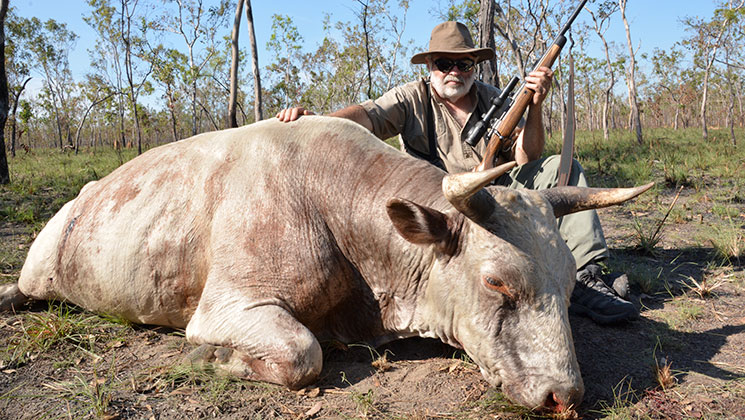
We crossed the river and started a long, swinging loop that would bring us back to the truck in a few miles. The vegetation on this side was much more open, and the panicked oxen had passed through here, so we had not expected to see much. Which is why a large white mass moving through the trees ahead of us set me wondering why a ghost was out in this heat.
The vast majority of wild ox bulls are a russet red color, yet as we closed the gap we realized our ghost was a rare white phase. I suspect that old bull had watched the panicked rush of the other oxen with mild amusement before returning to his feeding, thinking them foolish women and children.
Once again we found ourselves trying to close the gap in an open area that had been burned. At 135 yards it was apparent that was as close as we would ever get. The bull was behind some brush, and as I waited for him to come out, he smelled a rat. The wind was in our favor and we were standing still, so I think it was just the sixth sense that old survivors develop. He turned around and started to trot off in exactly the wrong direction.
The last look I was going to have of him was a quartering view of a disappearing opportunity. I am often criticized for my advocacy of big cartridges and heavy bullets for hunting. This is why I do it. I held in front of his hindquarter, which would put the exiting bullet on a path to smash his off-side shoulder. The problem was this bull was huge and there was a lot of “ox” between the two. With a lesser cartridge it would have been a mistake, but I was using a .458 Lott with 500-grain Barnes TSX bullets. As I shot the bull turned to run parallel to us, and working the bolt fast I hit him twice more, but it wasn’t needed. The first shot had done its job with an impressive path of destruction.
I stayed with the bull to make my peace while Simon hiked for the truck. Hours later he was back, having made a road where none existed. The bull was so huge we had to use the truck and a chain to roll him up on his belly for photos.
The wild ox is persecuted by Aboriginals because the meat is so good. After eating some of this bull I can see why. Not only is it a worthy animal to hunt (wary, spooky and tough), but it is fantastic on the table.
■ ■ ■
Later we hunted for a “management” buffalo. We found one escaping the heat in a large coastal pond while filling up on the seaweed growing there. Again the shot was on the long side, but if I waited for him to exit the pond it would be too far. A quick conference decided that they always run after the shot. The idea was to shoot him and hope he made the far shore. Of course when that big .458 slug hit him he fell straight down. I must say that extracting a buffalo from a muddy pond was a life experience. It wasn’t the water so much as the mud. It was pocked with thousands of buffalo tracks and so I never knew if the next step would sink me to my knees or my waist. At least the commotion served to keep the crocs away.
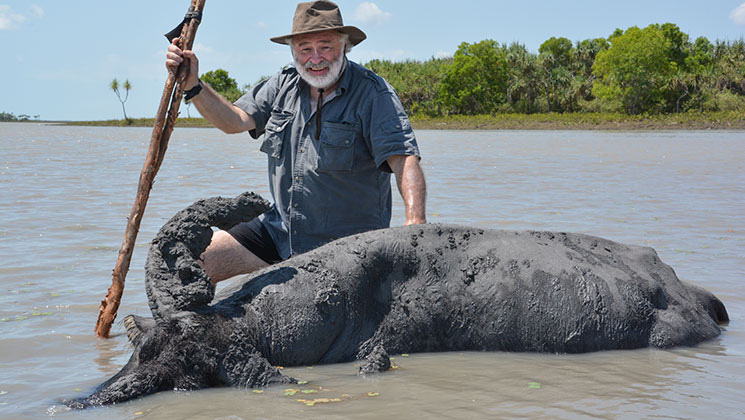
We finished out the days hunting wild boar and fishing for barramundi along the coastal mangroves. One day we traveled to the coast where we visited several middens, huge mounds of mollusk shells formed over thousands of years from Aboriginals eating there. Some were 10 feet high or more, and perhaps a quarter-acre in size. We found several stone axes and a spear head lying on top of one. It was humbling to hold the tools and realize another hunter had formed them out of stone thousands of years ago. We left them lying on the midden, taking nothing but photographs and a humbling realization that by hunting in Australia I was continuing a tradition that was started more than 40,000 years ago.
■ ■ ■
Book It
To hunt Australia with Simon Kyle-Little, visit australianbiggamesafaris.com.au or email him at [email protected].




